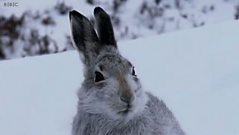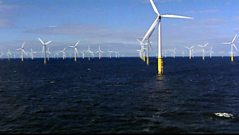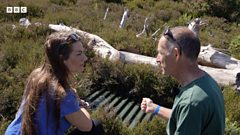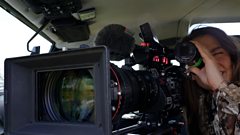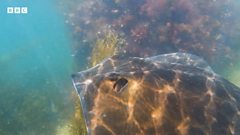
Lifeboat limits
Are nature reserves no more than life rafts floating in an inhospitable sea?
The large copper butterfly was lost from Britain because of loss of habitat and over-zealous butterfly collectors. But then in 1927 pioneering conservationists tried to bring the butterfly back, introducing it into Woodwalton Fen. But the project was doomed from the start, as Woodwalton Fen was in fact an island surrounded by intensive farmland. The farmland kept being drained, sucking the nature reserve dry and killing off the moisture-loving food plant of the butterfly, the great water dock. The result: the large copper butterfly became stuck on an island with no food and nowhere to go. After 70 years of struggle the conservationist abandoned the project and once again the large copper was lost. It's very sad, but it tells us that if conditions on a nature reserve have changed as we might expect them to do with globab warming, then animals need to be able to move out and find better habitat. At the moment, across much of Britain, they simply can't. Our nature reserves are life rafts floating in an inhospitable sea of agriculture. If we want to make things work, we've got to start thinking about conservation in a whole new way.
Duration:
This clip is from
Featured in...
![]()
成人快手 Nature
Be captivated, informed and inspired by the world's wildlife.
More clips from Signs of Change with Chris Packham
-
![]()
Breaking the chain
Duration: 03:16
-
![]()
Future wild
Duration: 04:26
-
![]()
Over exposed
Duration: 03:41
-
![]()
Signs of Change with Chris Packham
Duration: 00:20
More clips from Springwatch
-
![]()
Hannah Stitfall discovers RSPB Arne's reptiles
Duration: 02:53
-
![]()
Hannah Stitfall goes behind the scenes on Springwatch
Duration: 01:18
-
![]()
Enjoy the calmness of a kelp forest
Duration: 01:11




